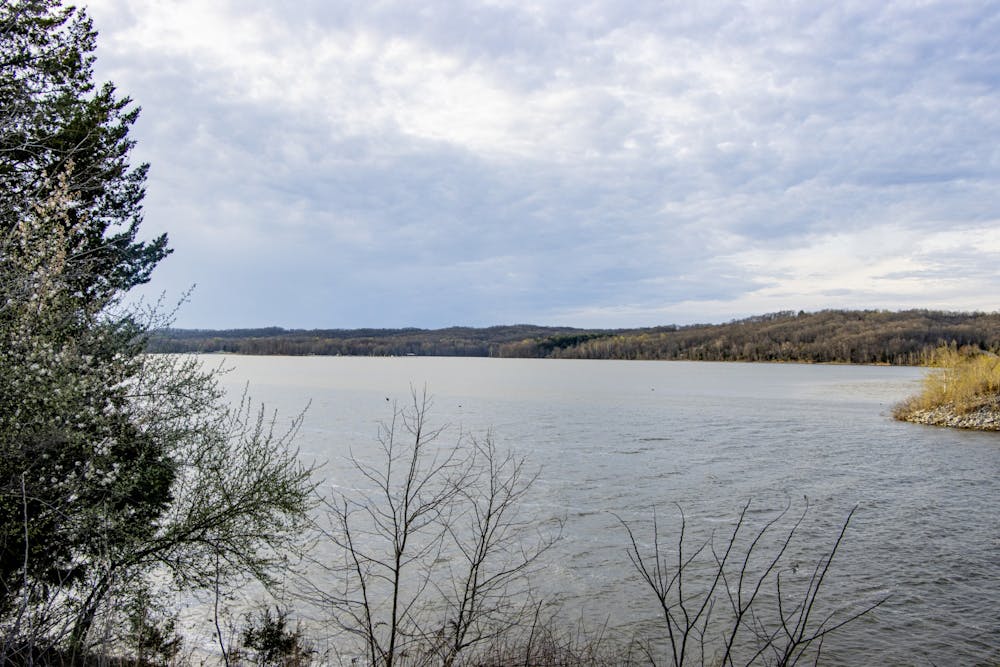Judge Tanya Walton Pratt ruled on March 30 the U.S. Forest Service’s proposal to burn and cut down trees in the Hoosier National Forest poses pollution risks for the Lake Monroe watershed.
The deforestation proposal, named the Houston South Vegetation and Restoration Project, dates back to 2018. The project hoped to log 4,300 acres and apply controlled burns to another 13,500 acres of the Hoosier National Forest near the northwest corner of Jackson County, according to the IndyStar.
The Indiana Forest Alliance, along with the Monroe County Board of Commissioners and the Hoosier Environmental Council, filed a lawsuit in 2020 regarding concerns the proposal would have a negative environmental impact.
Although the judge dismissed the lawsuit's claims that the proposal violated the Endangered Species Act, she ruled the U.S. Forest Service violated federal law by dismissing the potential risk of sediment runoff, which would increase contamination in Lake Monroe.
Emma Steele, the outreach coordinator for the Indiana Forest Alliance, said the organization was disappointed other claims, like the risks to the Indiana bat, which is an endangered species in the Midwestern and Southern U.S., were dismissed.
However, Steele said the project must take into consideration the environmental impacts to Lake Monroe, which provides water for 120,000 people, before proceeding as a result of the part of the ruling which considered risks of water pollution.
Excess sediment from logging and burning would be washed into Lake Monroe from the rain, effectively becoming a pollutant, Steele said. This would impact the water quality for citizens who get their drinking water from the lake.
Beyond the ruling, Steele said she’s concerned about the way manipulating forests could prevent the Hoosier National Forest’s resilience to climate change by drying out forests and potentially harming essential species before an expected dry period fueled by climate change.
“These really aggressive logging and burning projects, especially with this burning aspect, are introducing this force that could really limit our forest’s ability to naturally adapt to climate change,” Steele said.
Justin Maxwell, an associate professor in geography and climatologist, said controlled burns are a good strategy to increase oak and hickory trees.
Maxwell said fire is a better solution than logging, which can reduce the forest cooling effect on the climate and may not lead to oak and hickory growth. He said pre-existing seed banks for other species and an overpopulation of deers, which eat oak saplings, can complicate the process.
He said he criticized the U.S. Forest Service’s lack of attention to the slope of the land, which can affect how well oaks and hickories grow. Controlled burns applied to north-facing slopes, for example, will not be as effective.
“Fire’s a natural part of the system,” Maxwell said.
The goal of the Houston South Project is to restore oak and hickory trees to the forest. According to the final assessment document from November 2019, a major target for the project was the 500 acre area of non-native pine trees, originally planted to prevent erosion, which is now preventing oak and hickory growth because of its abundance of shade.
According to the document, oak and hickory trees are a food source for many species. The project predicts removal of pines will promote new tree growth and create habitats for some bird species.
The Forest Supervisor for the Hoosier National Forest did not respond to a request to comment.
Tim Maloney, the senior policy director for the Hoosier Environmental Council, said logging and burning projects can strip surface soil and vegetation, leading to erosion and sediment runoff. He said more sediment in Lake Monroe would increase water treatment expenses for the City of Bloomington.
Lake Monroe receives around 1 million visitors a year, which is also a major economic benefit for the region, Maloney said.
“(Lake Monroe) provides opportunities for people to get outdoors and hike and swim and fish,” Maloney said. “The lake will just be much less valuable for those activities if it’s unhealthy.”




